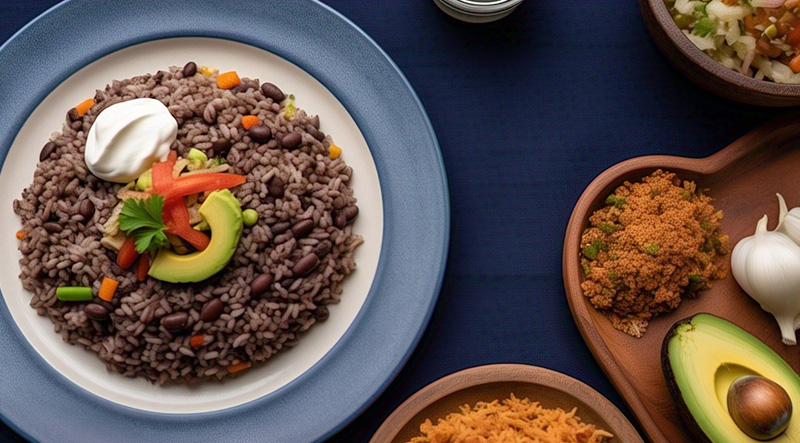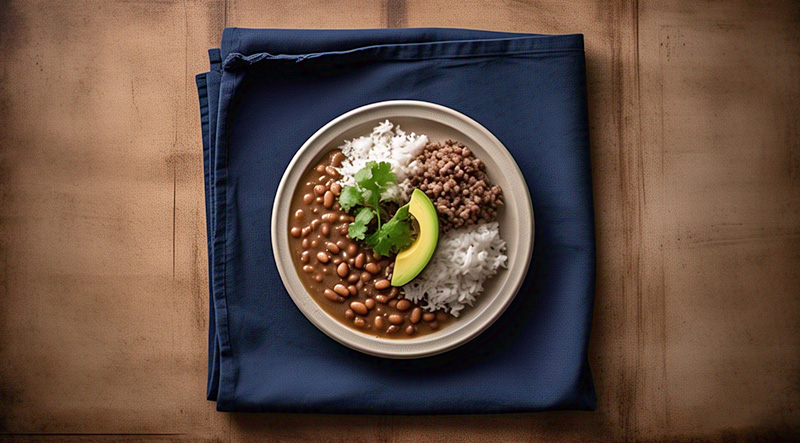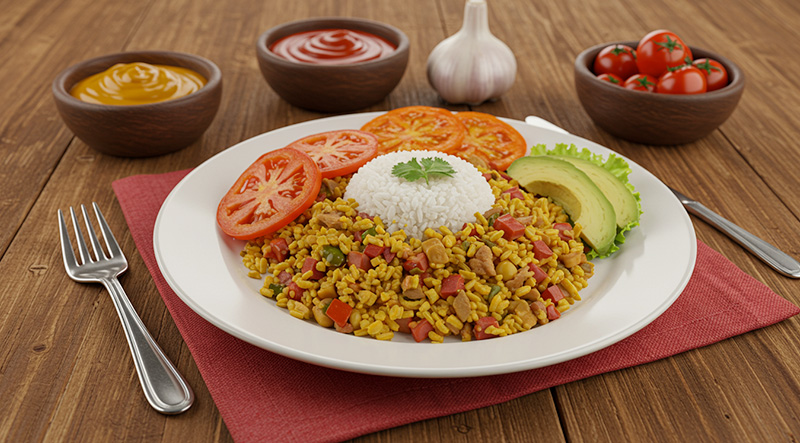Wake up to the heart and soul of Costa Rican cuisine with Gallo Pinto, the beloved national dish that turns simple ingredients into a flavor-packed tradition. This savory blend of rice and black beans, sautéed with onions, bell peppers, garlic, and fresh cilantro, is more than just a meal—it’s a morning ritual. Served alongside golden fried plantains, creamy sour cream, warm tortillas, and sunny-side-up eggs, Gallo Pinto is a comforting, colorful plate that captures the warmth and vibrancy of Costa Rica in every bite. Whether you’re fueling up for a jungle hike or sipping coffee by the beach, Gallo Pinto is pura vida on a plate. Read More...
The History of Costa Rica’s National Dish – Gallo Pinto:
When you think of Costa Rica, lush rainforests, pristine beaches, and the phrase pura vida may come to mind. But ask any local what truly embodies the heart of Costa Rican culture, and chances are, they’ll point to a humble yet flavorful dish: Gallo Pinto. This national treasure, a simple combination of rice and beans, holds a rich cultural history that mirrors the spirit and heritage of the Costa Rican people.
Origins Rooted in Simplicity:
Gallo Pinto, which translates to “spotted rooster” in Spanish, gets its name from the speckled appearance of white rice cooked with black beans. Its true origins are widely debated, with both Costa Rica and Nicaragua claiming to be the birthplace of the dish. While it’s nearly identical in both countries, the Costa Rican version typically uses black beans, while red beans are more common in Nicaragua.
The dish likely dates back to the colonial era, when Spanish settlers and African slaves brought rice and beans to the Americas. Over time, these ingredients merged with indigenous cooking techniques and local herbs like culantro (wild cilantro) to form what we know today as Gallo Pinto.
A Symbol of National Identity:
Despite its modest ingredients, Gallo Pinto became more than just a meal—it evolved into a symbol of Costa Rican national identity. Its widespread availability and low cost made it a staple for working-class families, farmers, and city dwellers alike. As Costa Rica moved toward modernization in the 20th century, Gallo Pinto remained a constant in households across the country, enjoyed at breakfast tables, roadside sodas (local diners), and five-star hotels alike.
Today, Gallo Pinto is usually enjoyed for breakfast, often served with eggs, fried plantains, tortillas, and sour cream. It’s a dish that unites generations and regions, bridging the divide between rural traditions and modern culinary expression.
Cultural Celebrations and Global Reach:
As Costa Rican culture spread globally through tourism and diaspora communities, so too did Gallo Pinto. The dish has become a culinary ambassador for the nation, often featured in international food festivals, travel shows, and expat cafes. It even made headlines when Costa Rica and Nicaragua humorously engaged in a “Gallo Pinto war,” each trying to set world records for the largest plate—underscoring just how beloved and fiercely claimed this dish is.
Conclusion:
More than a meal, Gallo Pinto is a story served on a plate—a story of cultural fusion, resourcefulness, and national pride. From its disputed origins to its status as Costa Rica’s unofficial culinary mascot, Gallo Pinto continues to feed not just the stomachs but also the souls of those who taste it. It’s a dish that captures the essence of pura vida—simple, satisfying, and full of heart.
Prep Ingredients:

Sauté the Aromatics:
In a large skillet or frying pan, heat the oil or butter over medium heat. Add the chopped onion, red bell pepper, and garlic. Cook until the onion is translucent and fragrant (about 5 minutes).
Add Black Beans:
Incorporate the Rice:

Finish with Fresh Cilantro:

Serve Hot:

Pro Tips:
The total preparation and cooking time for Gallo Pinto is approximately 30 to 35 minutes. This includes about 10 to 15 minutes of prep time for chopping the vegetables and gathering ingredients, and 15 to 20 minutes of cooking time to sauté the aromatics, heat the beans, and mix in the rice. If you're using pre-cooked rice and beans, which is traditional and recommended, the process is even faster. Adding sides like fried eggs and plantains may add another 10 minutes, depending on your multitasking skills in the kitchen.
A single serving of Gallo Pinto, based on the recipe provided (including rice, black beans, vegetables, and a small amount of oil), contains approximately 250 to 300 calories. This estimate includes about 1/2 cup of cooked rice, 1/3 cup of black beans, and the sautéed aromatics. If you add traditional sides like a fried egg (90 calories), fried plantains (120 calories), and a small corn tortilla (70 calories), the full Costa Rican-style plate can reach 500 to 600 calories per serving, depending on portion sizes and extras like sour cream or avocado.







